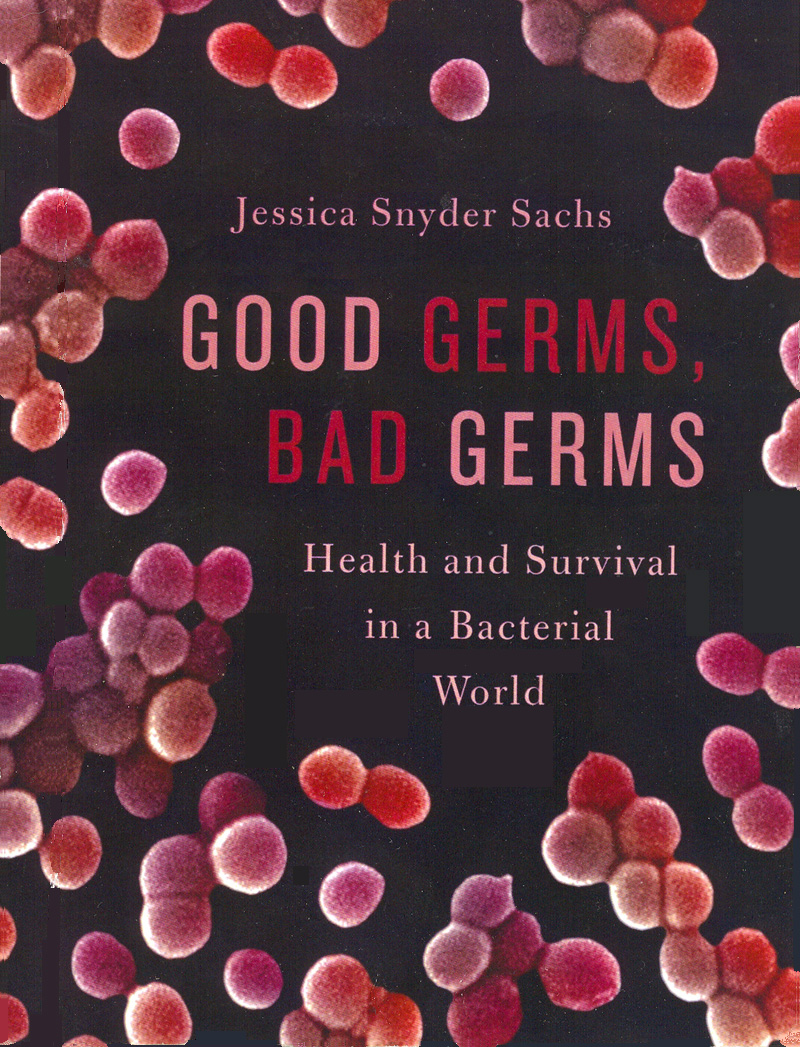

The theme of the book "Good Germs, Bad Germs: Health and Survival in a Bacterial World", by
Jessica Snyder Sachs, Hill and Wang (a division of Farrar, Straus and Giroux), New York, 2007, is
that while bacteria can cause both morbidity and mortality, nevertheless bacteria are also essential
for life. A consequence of using antibacterial drugs is that, at an increasing rate, resistance
easily passes between bacteria. Not only can resistance develop spontaneously (as shown by Esther
Lederberg's replica plating technique1), but also
by infection by episomes including plasmids and viruses (including bacteriophages such as the
temperate λ). Indeed, it is well-known that genetic material passes between chromosomes and
mitochondrial DNA (mtDNA) or chloroplastid DNA (cpDNA) - genetic material is quite "promiscuous",
and can even jump species. Bacterial resistance can be transferred by transduction in this manner,
thus the increasing importance of bacterial resistance, a view that has not always been held (see
the figures below).
The book quotes the usual grandiose, exaggerated and deceptive claims found on Joshua Lederberg's
NLM website, such as λ phage being discovered in his lab. This deceptive claim neglects to
cite that in fact it was Esther M. Zimmer Lederberg (his ex-wife), who first discovered lysogenic
λ phage (not Joshua Lederberg)2. Thus the
book extends methods of overcoming bacterial resistance by using phages and other techniques.
An additional claim is made that one should view bacterial disease and resistance as extending beyond the human organism to the human organism augmented by its internal bacterial and viral environment. Indeed, the entire community of human beings, livestock, bacteria and viruses that affect all these living beings should be viewed as a single system. Indeed, according to the well-known endosymbiotic theory, eukaryotic cells incorporate prokaryotic photosynthetic eubacteria (most likely cyanobacteria) by invagination, that become plastids (similarly, α-protobacteria are incorporated as mitochondria before chloroplasts were incorporated).
While the emphasis of this book by Jessica Sachs is upon human beings and livestock, it is strange that major economic dislocations that can be caused by diseases that affect plants are totally omitted, including viroids. However, the book is exciting and informative.
|
|
|
| Click Here if clicking on image fails | Click Here if clicking on image fails |
1 Lederberg, J., Lederberg, E. M., March 1952, "Replica plating and indirect selection of bacterial mutants", Journal of Bacteriology 63(3):399-406
2
Lederberg, E. M., 1950, "Lysogenicity in Escherichia coli strain K-12",
Microbial Genetics Bulletin, 1, pp. 5-9, Jan. 1950,
Univ. of Wisconsin [Evelyn Maisel Witkin, Editor], Ohio State University,
ISSN: 0026-2579, Call No. 33-M-4, OCLC: 04079516, Accession Number: AEH8282UW
© Copyright 2006 - 2018 The Esther M. Zimmer Lederberg Trust
© Copyright 2006 - 2018
The Esther M. Zimmer Lederberg Trust
 Website Terms of Use
Website Terms of Use